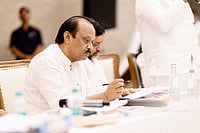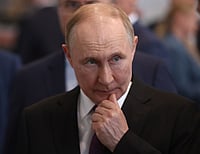In the sixties of the last century, India was embroiled in two major conflicts—with China in 1962 and with Pakistan in 1965. India had not really anticipated a conflict with China, and was surprised by the development, for the government was engaged in diplomatic efforts to solve the border issue. The Indo-Pak war of 1965 was of a different mould, for it occurred in the context of several earlier skirmishes in Jammu & Kashmir. The results of the two conflicts also greatly differed. India had the worst of the exchanges (and outcomes) in the conflict with China, but vis-a-vis Pakistan, India held the upper hand.
Also, in neither instance was India perceived as the aggressor. India’s history hardly records any instance of us being the aggressor. Hence, it has not been entirely possible to test the validity of Sun Zi’s pithy maxim, “Victorious warriors win first and then go to war, while defeated warriors go to war first, and then seek to win”.
The 1962 war did however provide India’s intelligence agencies with valuable lessons, including the danger of depending overly on intelligence provided by friendly western agencies, much of which seemed to confirm India’s own perceptions that China was unlikely to provoke an armed conflict. The agencies also learnt not to permit “atmospherics”—such as the perceived state of relations between any two countries—to override hard intelligence provided by field operatives. Further, how critically important it was to have strategic intelligence, and not depend excessively on tactical intelligence. Lack of information about China’s intentions brought home to India’s intelligence agencies the “blind spot” in their intelligence-gathering efforts.
When the India-Pakistan war broke out in 1965, India was much better prepared to take on the combatant country. Moreover, Pakistan had all along been perceived as a hostile and irrational neighbour. The bulk of India’s armed forces were, therefore, already positioned in the west/northwest of the country to blunt any possible Pakistani offensive. On the intelligence side as well, India was well prepared to deal with Pakistan. A series of skirmishes between April and September of 1965 had alerted intelligence agencies about Pakistan’s plans. They also had time to hone their skills, taking advantage of the improvements effected in the wake of the Sino-Indian conflict.
The 1965 India-Pakistan conflict involved two major Pakistani campaigns—‘Operation Gibraltar’, designed to infiltrate its forces (as irregulars) into Jammu & Kashmir and provoke an insurgency; supplemented by ‘Operation Grand Slam’, launched subsequently, aimed at cutting the overland route to Kashmir to prevent India from bringing its tanks into Kashmir. The latter witnessed large-scale casualties, and several fierce tank battles.
India’s intelligence agencies performed well during both campaigns. Incursions by Pakistan into the Rann of Kutch earlier on had provided some excellent leads into Pakistani thinking—including its future plans to carry out large-scale incursions across the ceasefire line. Consequently, when around 30,000 Pakistani soldiers crossed the LoC in August 1965 disguised as locals and headed to various points, Indian security forces could effect several captures. This, in turn, provided additional information on Pakistan’s plans.
The agencies had another piece of valuable intelligence—that Pakistan was feeling emboldened to launch a strike across the ceasefire line based on its wrong hypothesis that following the Sino-Indian conflict India’s military was unable, or unwilling, to tackle any quick military campaign in Kashmir. Pakistan’s military thus saw this as an excellent opportunity to strike. Anticipating Pakistan’s possible gambit, India could thus checkmate Operation Grand Slam. India’s decision to enlarge the theatre of conflict away from Kashmir into Pakistan Punjab and further to the south was largely dictated by advance information of Pakistan’s plans.
Intelligence warnings that the Ichogil canal would act as a major barrier to India’s tanks were, however, not heeded by the army. This delayed the Indian army’s advance towards—and possible capture of—Lahore. It subsequently became a major point of contention—with the army contending that it had not been informed about the existence of the Ichogil canal.

Indian troops scour the Kashmir countryside looking for enemy guerrillas, Sept 6, 1965
Euphoria that Pakistan had been bested in the conflict was replaced after the war by recrimination about faulty intelligence provided by the Intelligence Bureau about the Ichogil canal. Consequently, there was a renewed demand for restructuring and revitalising the intelligence system—a demand that had already been made following the Sino-Indian conflict of 1962, and been partially met. The military sought the creation of a separate external intelligence agency—one possibly headed by a member of the armed forces—to better deal with conflicts of the 1962 and 1965 variety.
Already, following the 1962 Sino-Indian conflict, substantial changes in intelligence capabilities had been effected. The charter of the Intelligence Bureau—a legacy of British rule in India whose responsibilities were limited to domestic intelligence, internal security and border issues—had greatly expanded. Extensive discussions among experts had preceded this step. The aim was to make the IB a modern agency, better suited to deal with the evolving nature of current conflicts.
Among the changes made was the creation of a directorate-general of security which comprised the Aviation Research Centre (ARC), the Indo-Tibetan Border Force (ITB) and the Special Security of the Border Force (SSB). The directorate-general of security was to function nominally under the Intelligence Bureau, and also report to its director.
The ARC was the game-changer, possessing as it did highly sophisticated technical intelligence-gathering capabilities, with an aviation wing for special operations. The ITB was to operate as sentinels on the Sino-Indian border, comprising both a political and a security component. The SSB was to be a “stay-behind organisation”. Not acknowledged was an extremely secretive body intended to carry out special operations across the border in Tibet.
The growing clamour for bifurcating external and internal intelligence functions reached a crescendo following the 1965 war. This coincided with a period when the general perception worldwide was to have separate organisations for external and internal intelligence. The rationale was that the basic requirements—including the nature of personnel for these agencies—differed. Also that all modern democratic nations had separate external and internal intelligence agencies.
The government conceded the demand in the face of a determined move in this direction. In 1968, the Intelligence Bureau split into the Intelligence Bureau for domestic and border intelligence; and the Research and Analysis Wing (RAW), exclusively intended to deal with foreign intelligence. The RAW duly incorporated the directorate-general of security set-up, and also included the external intelligence wing of the IB. R.N. Kao, an Intelligence Bureau veteran, was chosen to head and shape the new external agency.
The real benefit that came from establishing a separate agency was in the changed mindset. It included the realisation that a modern state required a state-of-the-art external intelligence agency, constantly striving to improve its technological and innovative skills to handle the evolving nature of threats.
The intelligence profession today has moved far beyond the techniques of intelligence set out in Sun Zi’s Bingfa and Kautilya’s Arthashastra. While human intelligence remains a vital component, intelligence is now heavily dependent on innovative technological methodologies. Capabilities in regard to intelligence collection, analysis and assessment have all grown exponentially. By far the biggest game-changer has been the internet. With the internet, information has become more dynamic, more interactive and more abundant, and also ubiquitously accessible.
(M.K. Narayanan, a long IB hand, is a former national security advisor and ex-governor of West Bengal)


























